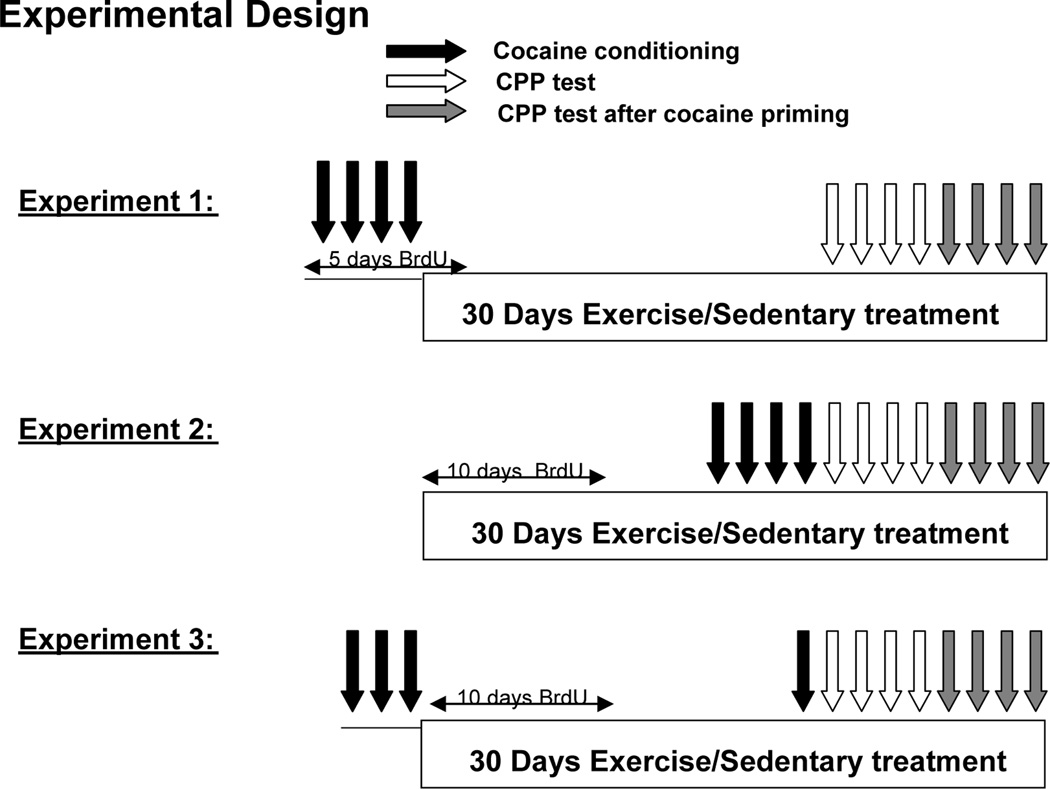Figure 1.
Schematic diagram of the experimental design. The black arrows indicate when CPP conditioning sessions were administered. The white arrows indicate when CPP testing took place. The grey bars indicate when CPP testing took place after a cocaine priming dose was administered. The boxes indicate when the Runner/Sedentary conditions were administered relative to conditioning and CPP testing. Each experiment 1–3 contained 30 animals (20 conditioned with cocaine and 10 saline controls divided equally into Runner and Sedentary groups). In all 3 experiments, animals experienced 1 day of habituation to reduce novelty effects and 1 day of CPP pretesting to establish baseline texture preferences over the 2 days immediately preceding the conditioning (experiments 1 and 3) or Runner/Sedentary treatments (experiment 2). Animals in all 3 experiments experienced 30 days of uninterrupted running or sedentary treatment and a total of 4 days of CPP conditioning. The 3 experiments differed in the timing of the 4 CPP conditioning sessions relative to the Runner/Sedentary treatment phase. Animals were returned to cages with or without running wheels immediately after conditioning and testing to avoid the potential confound of animals experiencing withdrawal from running during the testing procedures.

